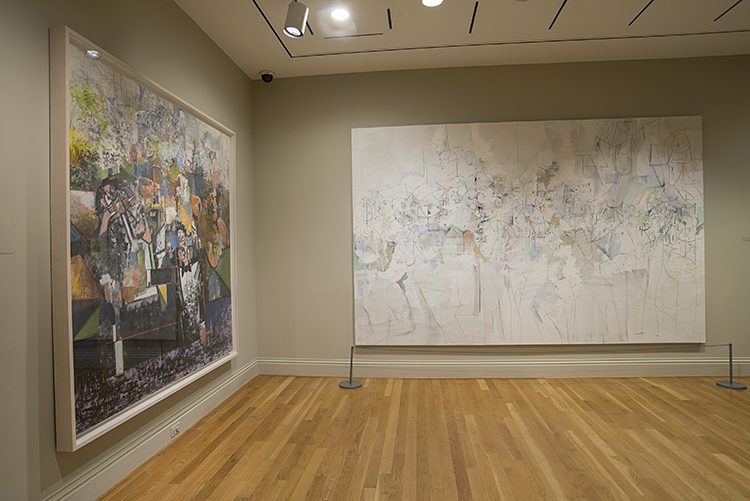What does George Condo mean when he speaks of his “drawing paintings?” We interviewed the artist with this and other questions about his installation at the Phillips, The Way I Think. Have more questions? Join us for a conversation between Condo and Deputy Director for Curatorial and Academic Affairs Klaus Ottmann on Thursday, May 25.
What are “drawing paintings?”
George Condo: “Drawing paintings” are something that were a reaction to the consistent hierarchy that supposedly exists between drawing and painting. What I wanted to do was combine the two of them and make drawing and painting on the same level, that there was no real difference between drawing and painting and by combining pastel, charcoal, pencil, and all these various different drawing mediums on a canvas, it would be an experience for the viewer to see that drawing and painting together can exist in one—I would say—happy continuum.
How has your drawing evolved over time?
GC: Well, this show gave me a chance to figure that one out. I saw the drawings that my mother had saved from when I was 4 and 5 years old until I was about 7 or 8, and really it was all about doing everything right, and making sure I got it right, and that everything looked precise. And then once I started to understand more of the conceptual qualities of art in the 70’s and the idea of deconstructing things, and reading more about Picasso and John Cage, well at this point you have to do everything wrong. You have to break all the rules. So the evolution went from doing everything right to doing everything wrong, but still trying to make sure that the pictures themselves are intact and that there aren’t any loose ends.
Hear more in a short video:


